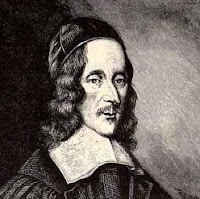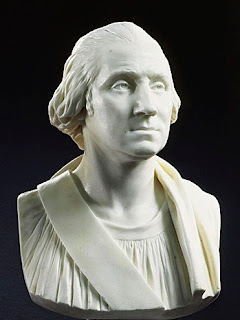news
Friday, May 11, 2012
What was The Protestant Reformation?
The Protestant Reformation changed religious attitudes
Around 1500 a number of northern humanists were suggesting that the Church had lost sight of the spiritual mission proclaimed by Jesus himself. Instead of setting an example of moral leadership, they said, popes were becoming political leaders and warriors. Instead of encouraging inner piety, priests were concerned about the details of ceremonies. And the Church as a whole, they said, seemed more interested in its income than in salvation. What the northern humanists were seeking was a new emphasis on personal faith and spirituality. When their message went unheard in the Church, a new generation of reformers urged believers who were unhappy with official religion to join a new church. This religious revolution, which split the Church in Western Europe, is called the Reformation.
George Herbert
 |
| George Herbert (1593-1633) |
Herbert was born into a noble Welsh family. Ordained about 1626, he gave up a career at court and at Cambridge University to become a devoted parish priest, from 1630 to his death.
Thursday, May 10, 2012
Jean Antoine Houdon
Jean Antoine Houdon (1740-1828) was the greatest French sculptor of his day, was born at Versailles. He began work in his art at a very early age, and at twenty won the coveted Prix de Rome. Houdon studied in Rome for ten years, at the end of which he returned to Paris as instructor at the School of Fine Arts. Among his finest works are the busts of Catherine II, Moliere, Rousseau, Voltaire, Buffon, Lafayette, Napoleon, Franklin and Washington. To make the latter, which is now in the state capitol of Richmond, Va., Houdon accompanied Franklin to the United States in 1785. It is considered the finest likeness of Washington extant.
Bust of Washington (Houdon)
Did you know that...
Did you know that...
as many as 250,000 new nerve cells can be formed each minute during a baby's development inside its mother? By the time the baby is born, the brain will have almost all the nerve cells, or neurons, it will ever nave. However, a child's brain continúes to increase in size after birth as other brain cells, called glia, grow around the neurons, insulating them and carrying out various "housekeeping" functions in the brain. A baby is also born with trillions of connections, or synapses, be-tween neurons. As the child learns various skills, many of these synapses are stimulated and become permanent connections.
Christopher Columbus
Even before Vasco da Gama brought wealth to Portugal, Spain also had become interested in the search for new trade routes. Its rulers, Ferdinand and Isabella, decided to finance a voyage by Christopher Columbus, an Italian navigator. Thinking that the world was much smaller than it actually is, Columbus believed he could reach India quickly and easily by sailing westward.
In August 1492 Columbus set sail with three small ships from Spain and crossed the Atlantic. His small fleet landed in October on a tiny island in the Caribbean Sea. He named the island San Salvador. After visiting several other islands, Columbus returned triumphantly to Spain in the spring of 1493 to report his discoveries. He believed the islands to be off the coast of India and therefore called their inhabitants "Indians." Actually, he had discovered the islands later known as the West Indies. Although Columbus made three more voyages between 1493 and 1504, he believed until his death that the lands he had found were part of Asia.
Romance languages
A Romance language is any of several languages that developed from Latin. The Romance tongues include French, Italian, Spanish, Catalan, Portuguese, and Romanian. Other Romance, or Romanic, languages are Sardinian and Rhaeto-Romance (the general name for a group of languages, including Romansh, spoken in certain parts of Switzerland, the Tyrol, and Friuli).
The Romance group also includes Provençal, the language spoken in southern France. Provençal was the language of the troubadours, who were the poets of the 1100's. The lyrics of more than 400 Provençal poets have come down to us. Most of their poems were love lyrics, but some had moral, religious, or political themes written to popular melodies. The use of Provençal as a literary medium began to decline soon after A. D. 1200.
Romance languages grew up because Rome sent colonists to settle the countries it had conquered. The soldiers, tradesmen, and farmers who colonized these conquered countries took their language with them, but it was not the Latin of the classics studied in school today. It was popular, or vulgar, Latin, the everyday speech of ordinary people. This popular Latin often adopted words or features of pronunciation from the language of the conquered country. For example, the Latin word for hundred, centum, became cent in French, ciento in Spanish, and cento in Italian. The varieties of popular Latin formed in this way eventually developed into separate languages.
Wednesday, May 9, 2012
Why were some of the early bridges in the United States covered?
Covered bridges once dotted the American countryside from the Atlantic Coast to the Ohio River. The bridges looked like square tunnels with peaked roofs. Some people claim that the bridges were cov¬ered so that horses would not be frightened by the water underneath. Others say that they were built as a shelter for travelers in faad weather. Actually the coverings were designed to protect the wooden framework and fiooring of the bridges and keep them from rotting. The pitched roofs, which shed snow, also reduced the amount of heavy snow that collected on the bridges. Wooden bridges became obsolete as traffic loads increased and modern trucks grew in size. Today only a few are still stand-ing. Many people work to preserve the remaining covered bridges.
Subscribe to:
Posts (Atom)
